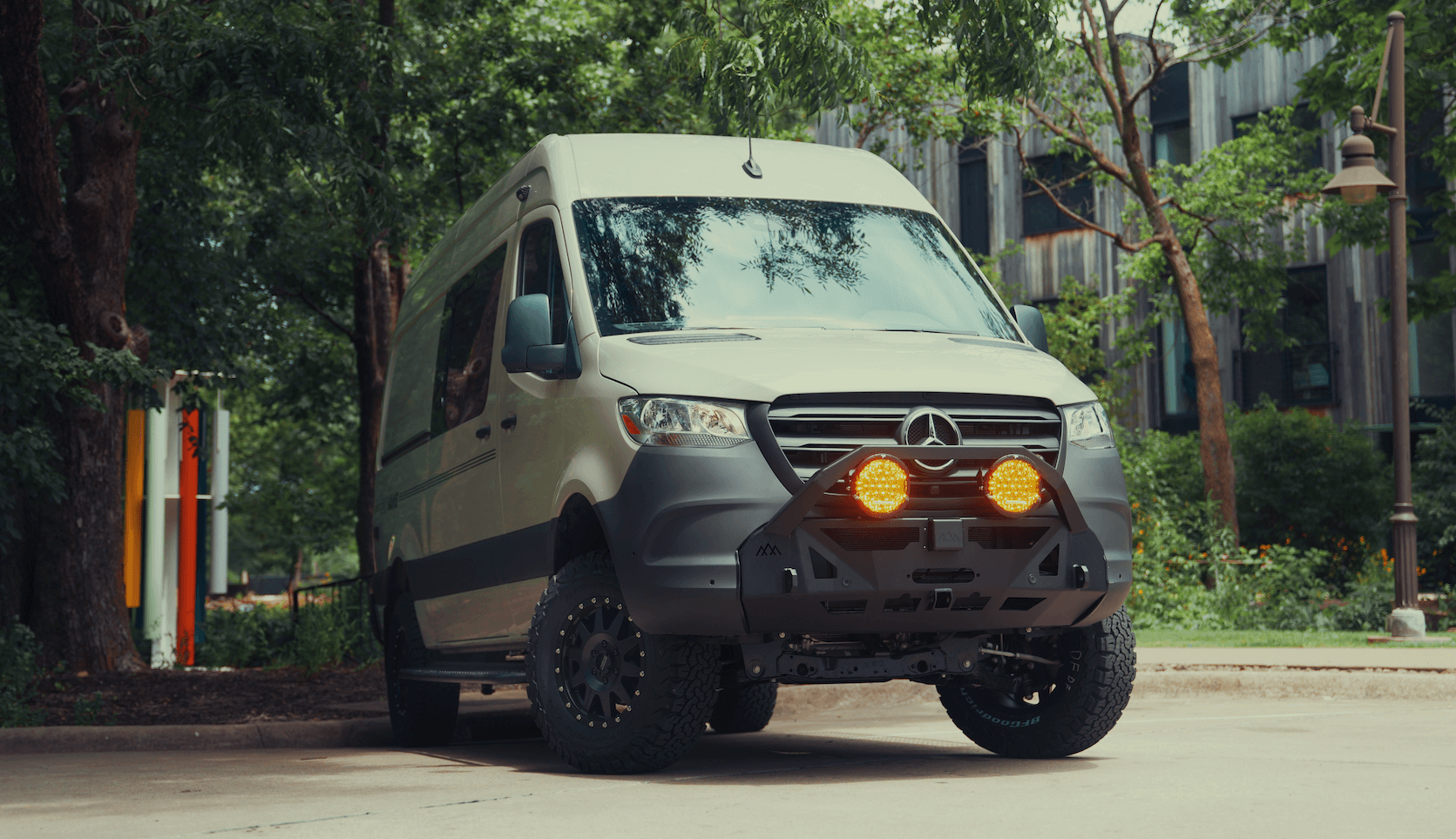Recreational Vans

Water expands as it freezes, which can split plastic tanks, crack fittings, and jam dump valves. Even short cold snaps can chill exposed tanks below freezing because still water sheds heat quickly through the tank wall. Heated tank pads supply steady warmth directly to the tank surface so the entire water mass stays above thirty two. When combined with insulated lines and protected valves, pads keep plumbing operational for winter camping and mountain travel. The result is dependable water service without thaw cycles or emergency repairs.
Selecting the right pad begins with tank material, size, and exposure. Most pads are designed for polyethylene or ABS tanks and adhere to flat areas with pressure sensitive adhesive. Look for a thermostat that energizes near thirty five and turns off around forty five to fifty to save power while preventing refreeze. Common voltages include 12 volt for off grid systems and 120 volt for shore or generator use. Match the pad dimensions to the largest flat surface you can access so heat spreads evenly.
Pad wattage drives heat output and current draw. A small 12 volt pad near 30 to 60 watts draws roughly 2 to 5 amps, while larger 120 to 200 watt pads can draw 10 to 17 amps at 12 volt. Multiple tanks add quickly, so calculate total load and confirm your alternator, batteries, and fusing can support continuous operation. Use properly sized wire runs, solid grounds, and dedicated fuses or breakers close to the source. Many builders switch pads with a relay and a labeled control so you can isolate them when weather warms.
Good adhesion is critical. Pads should mount to clean, flat tank areas free of debris or texture ridges, with firm pressure to eliminate air gaps. Do not overlap pads and do not install over labels, bolts, or seams. Add closed cell insulation over the pad and across the tank belly to reduce heat loss, and insulate lines and valves with foam or split loom. Where freeze risk is high, heat tape on drain lines and knife valves can complement the tank pad, followed by a moisture resistant insulation wrap.
A built in thermostat keeps things simple and reduces energy waste. Some systems add a control panel switch with an indicator light or a temperature display near the galley. Safety starts with correct fusing and wire gauge, strain relief for leads, and careful routing away from moving parts or hot exhaust. Pads are designed for plastic tanks, so verify manufacturer guidance before considering metal surfaces. Inspect periodically for edge lift, moisture intrusion at the lead, or damage from road debris.
Heated tank pads are only part of the freeze protection picture. Insulated enclosures with gentle air heat can shield pumps and filters that do not have direct warming elements. Recirculation systems route warm water through vulnerable loops to move heat where it is needed, though they consume water and energy. Heat tape on exposed lines and valves often pairs well with a tank pad strategy. Use non toxic antifreeze only in traps where allowed, not in potable tanks. Layer methods based on your climate, power budget, and storage layout.
Decide whether protection must run while driving, parked, or both. For shore power stays, 120 volt pads on a switched circuit work well. For off grid, prioritize efficient 12 volt pads, strong alternator charging, and solar that supports daytime replenishment. Reduce demand by insulating the underbody and routing vulnerable plumbing inside the thermal envelope when possible. Keep an eye on battery state of charge during extended cold spells and shut off pads when ambient temps climb out of the danger zone.
A heated tank pad plan should be coordinated with the entire water and electrical system. That includes tank placement, bracket clearances, wiring harness routing, service access, and diagnostics. Professional installation eliminates guesswork, prevents adhesive failure, and ensures your pads are fused, switched, and labeled for easy use. If you want a turn key winter capable platform built to last, consider a full system approach rather than piecemeal fixes.
OZK Customs integrates heated tank pads with insulated plumbing, protected valves, and smart controls inside clean electrical architecture. For new builds, our team designs the thermal and power plan from the start so winter function feels effortless. If you already have a platform, we can scope a focused upfit to add pads, insulation, and reliable switching without clutter. Explore our Recreational adventure vans to see how comfort and cold weather capability come together: Recreational adventure vans. If you are seeking a ground up solution, review our Custom build van services. Want a platform that can finance with a smart winter package, look at our Finance friendly vans.
Heated tank pads protect the core of your water system when temperatures plunge. The right pad size, dependable adhesion, proper fusing, and thoughtful insulation turn a risky season into a normal travel day. Bring your goals and climate profile to our team, and we will design a quiet, efficient setup that keeps tanks flowing without drama.
Tell us how and where you travel, and which systems need protection. OZK Customs will specify the correct heated tank pads, power distribution, and insulation package, install everything professionally, and test it with you at handoff. Your cold weather trips should feel simple. We can make that happen.
Ready to winter proof your water system with professional grade heated tank pads, insulated plumbing, and reliable controls. Tell us about your platform and cold weather goals. OZK Customs will spec the right pads, build a safe power path, and integrate everything into a clean, serviceable system. Submit the form and our team will design a solution that keeps your rig flowing in the cold.
ADDRESS:
6159 E Huntsville Rd, Fayetteville, AR 72701
PHONE:
(479) 326-9200
EMAIL:
info@ozkvans.com